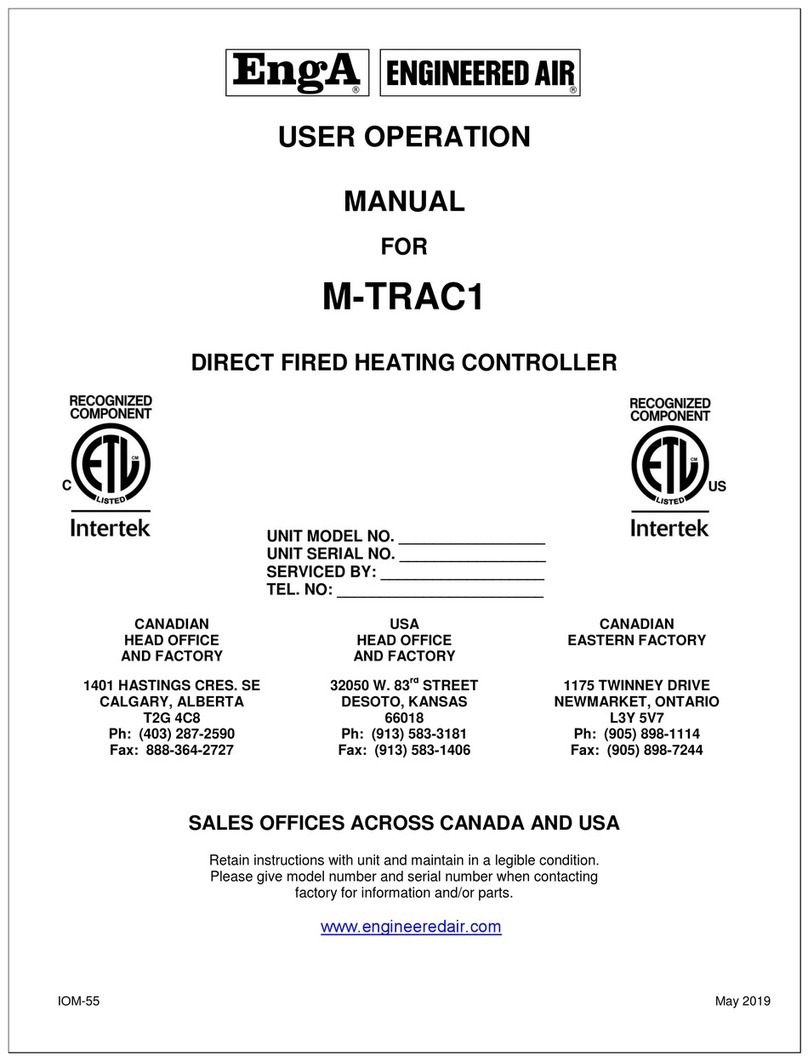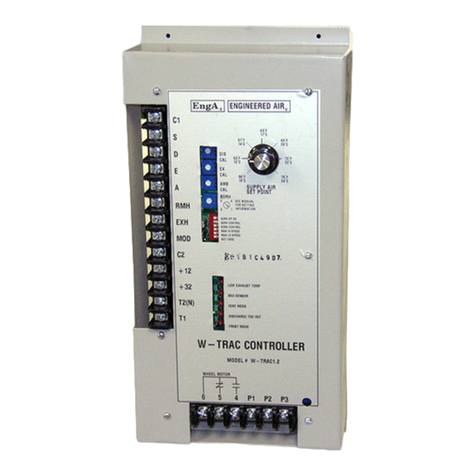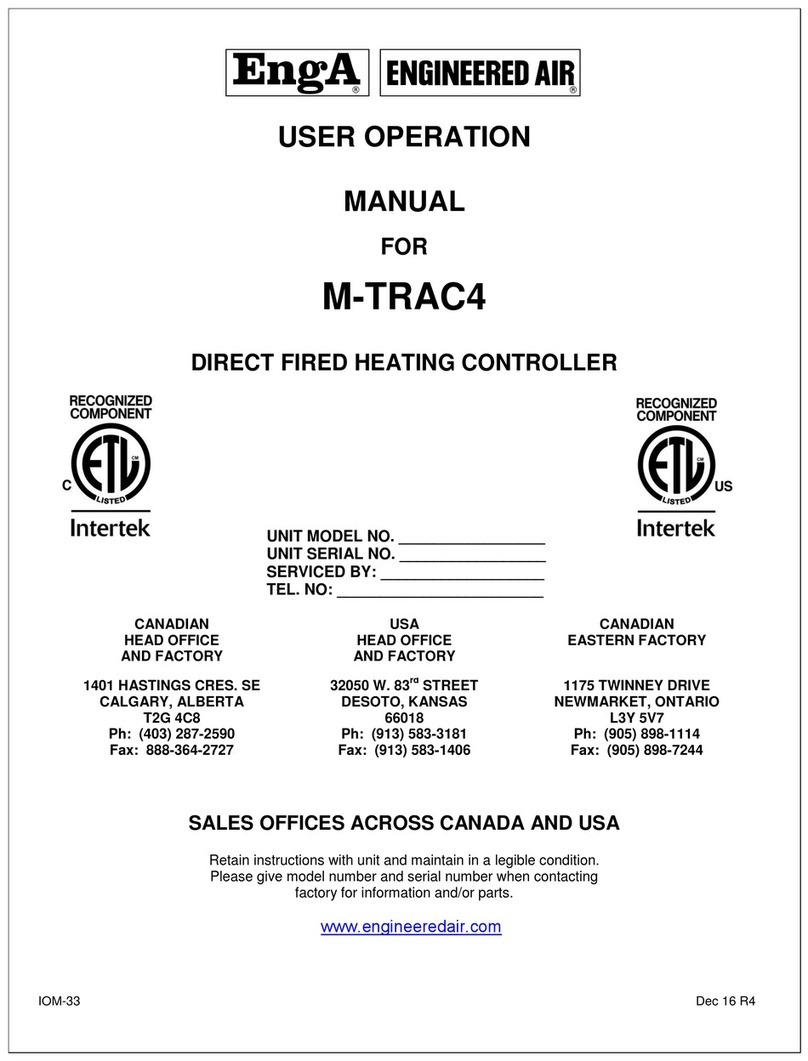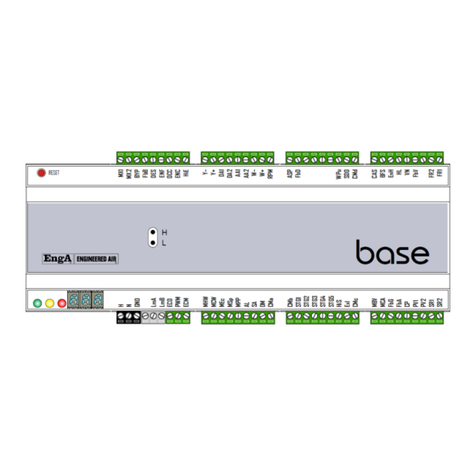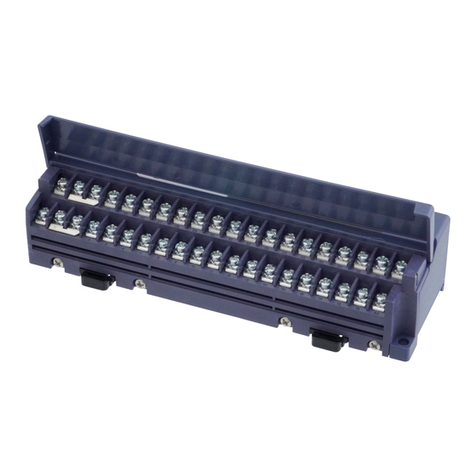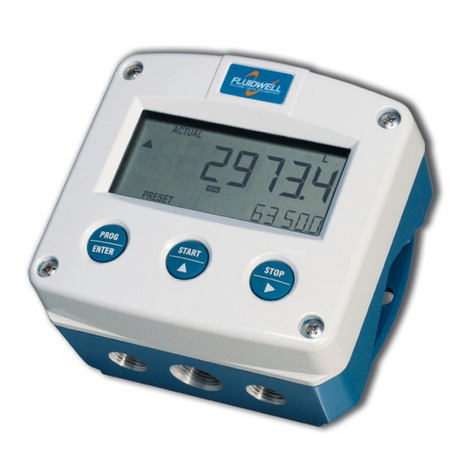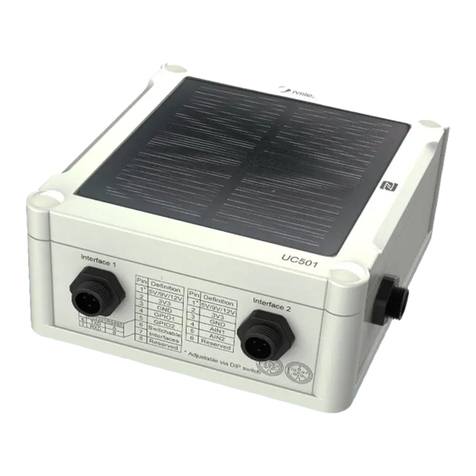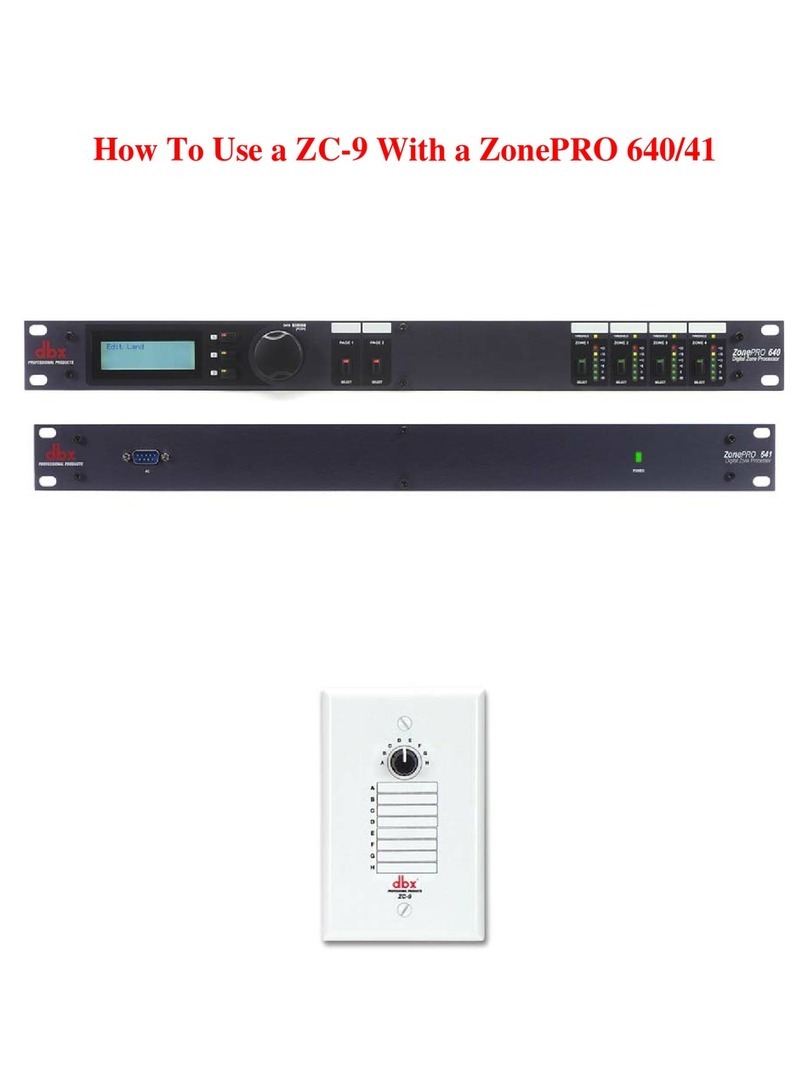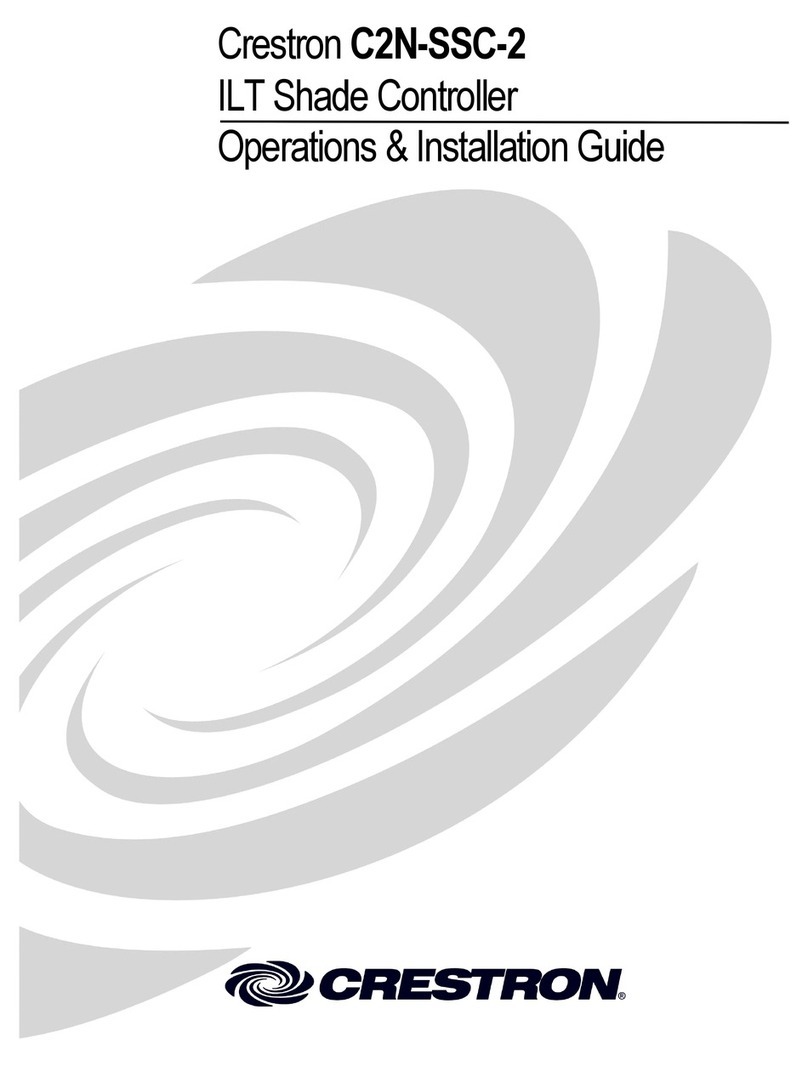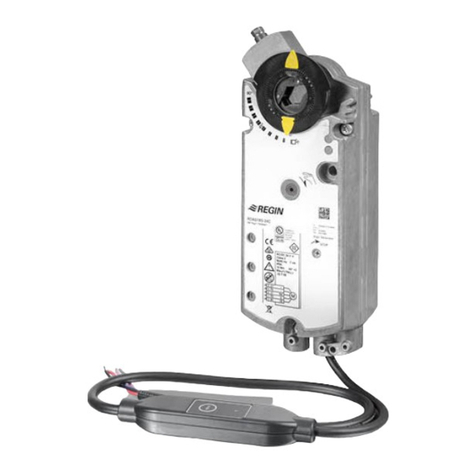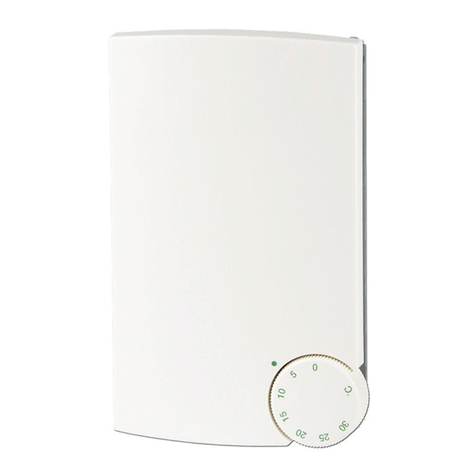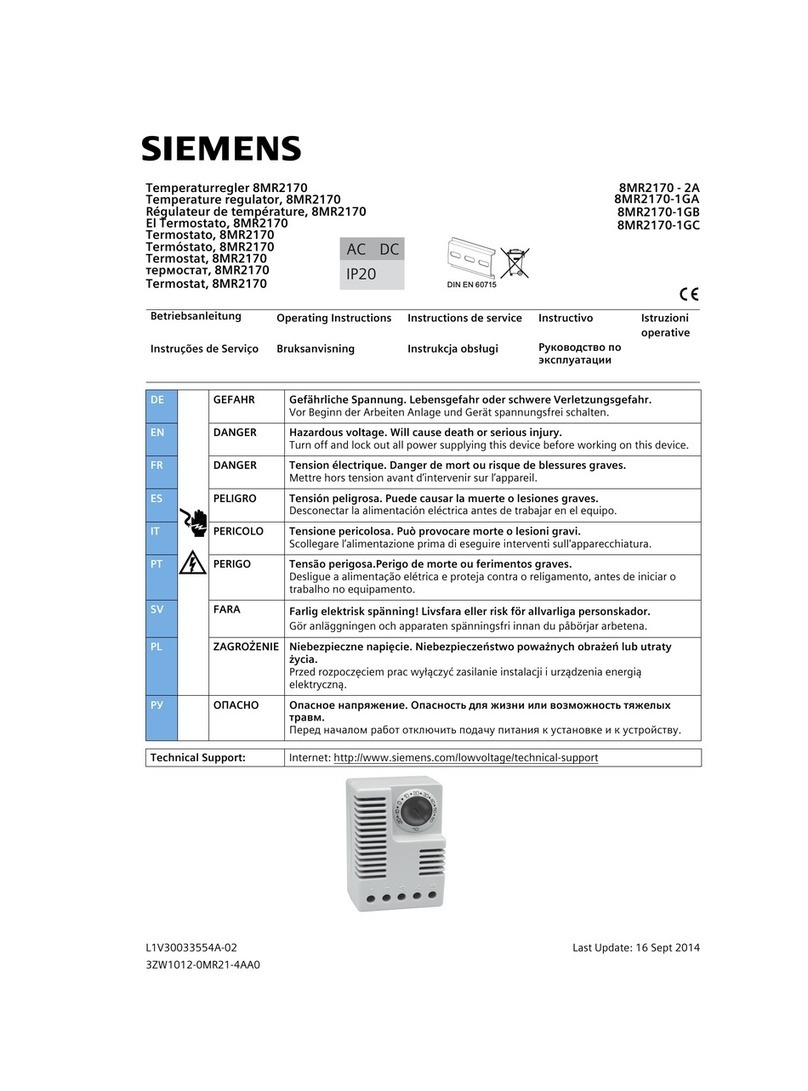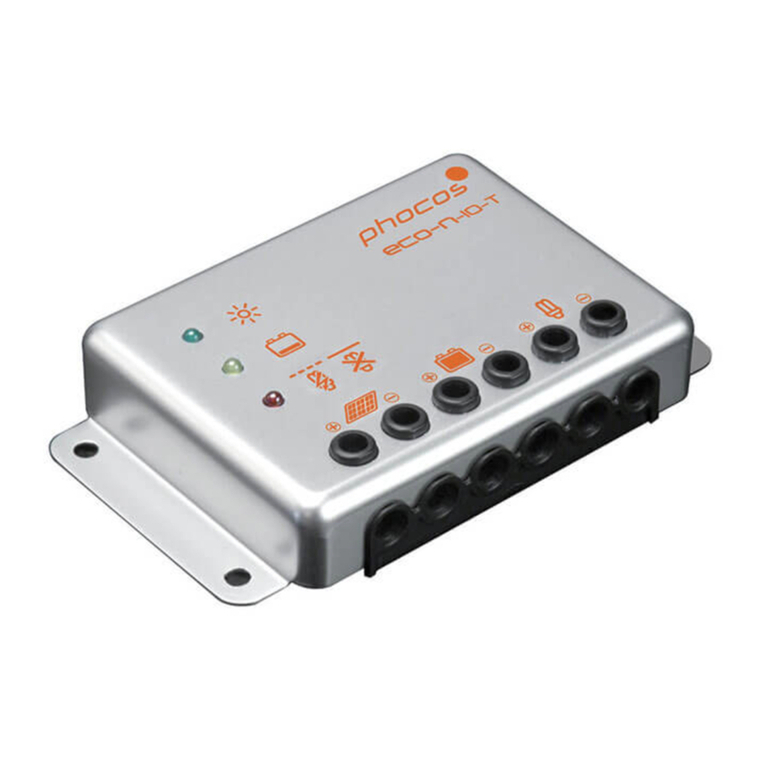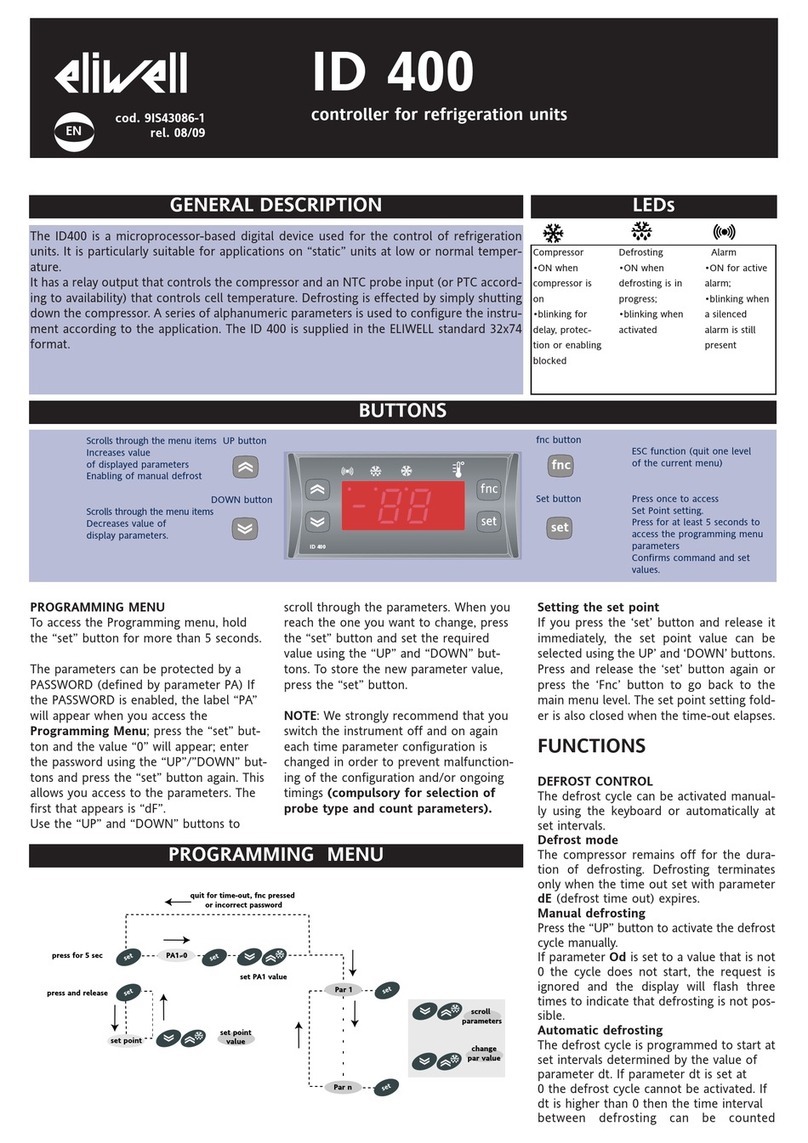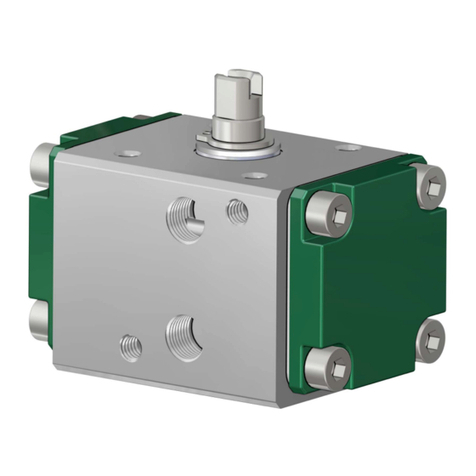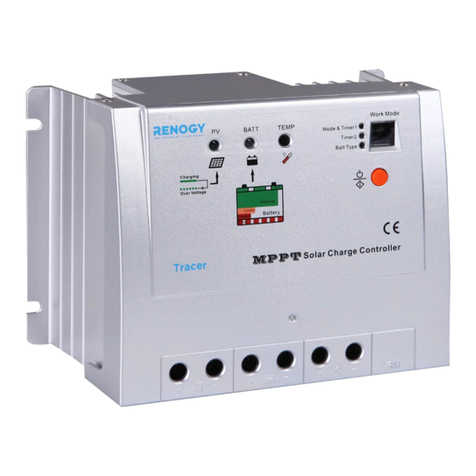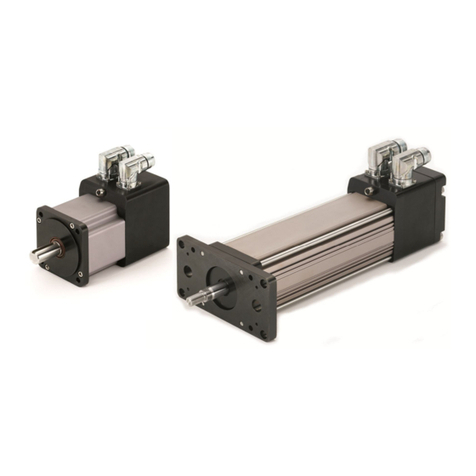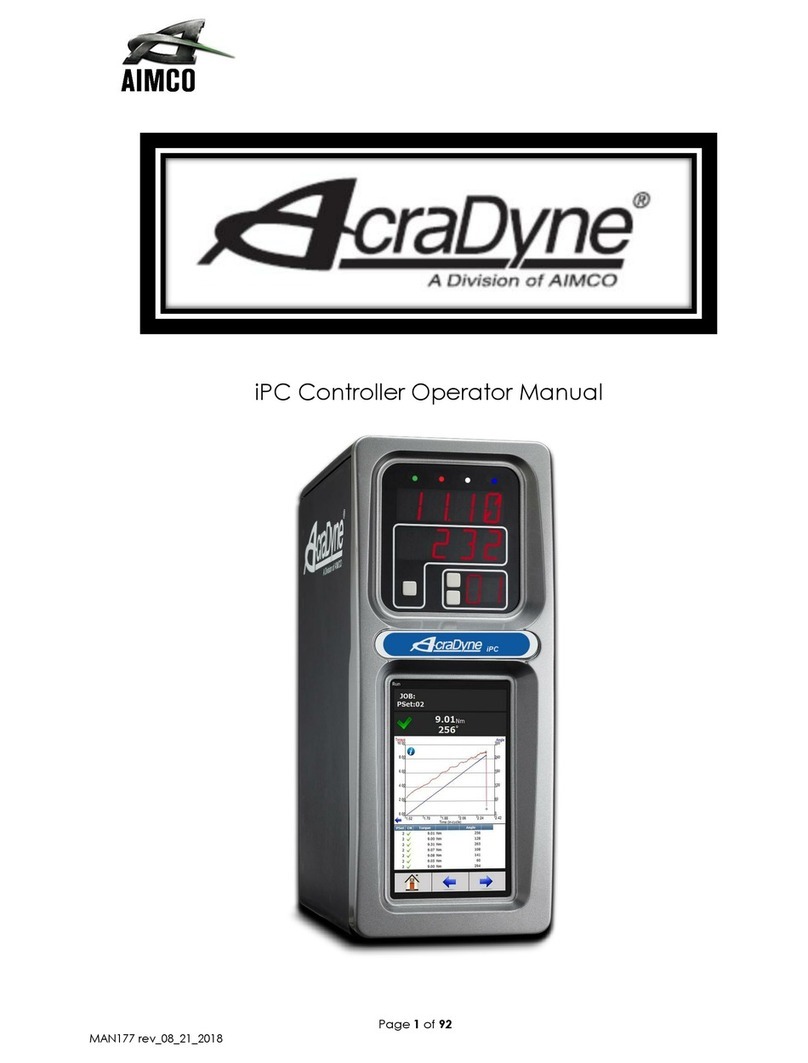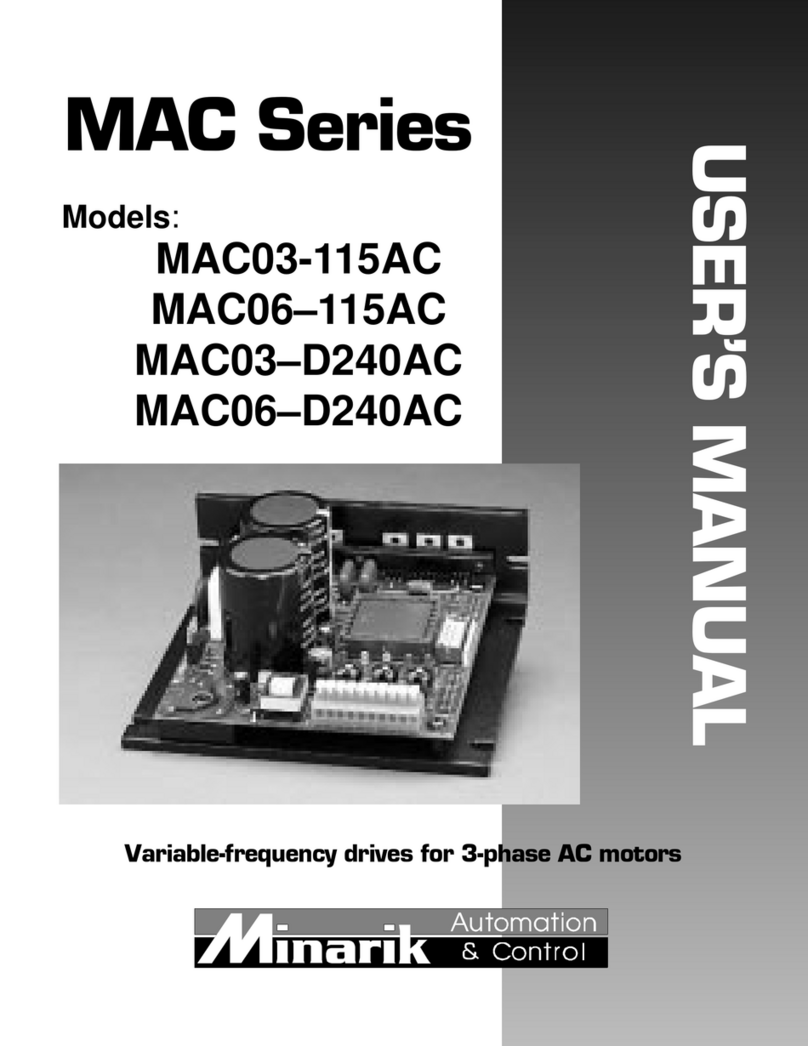Engineered air EngA G-TRAC2 User manual

A
IOM-25 Mar 99 R7
INSTALLATION, OPERATION
AND MAINTENANCE MANUAL
FOR
G-TRAC2
INDIRECT FIRED HEATING CONTROLLER
UNIT MODEL NO. _________________
UNIT SERIAL NO. _________________
SERVICED BY: ___________________
TEL. NO: ________________________
CANADIAN
HEAD OFFICE
AND FACTORY
USA
HEAD OFFICE
AND FACTORY
CANADIAN
EASTERN FACTORY
1401 HASTINGS CRES. SE
CALGARY, ALBERTA
T2G 4C8
Ph: (403) 287-4774
Fx: 888-364-2727
32050 W. 83rd STREET
DESOTO, KANSAS
66018
Ph: (913) 583-3181
Fx: (913) 583-1406
1175 TWINNEY DRIVE
NEWMARKET, ONTARIO
L3Y 5V7
Ph: (905) 898-1114
Fx: (905) 898-7244
SALES OFFICES ACROSS CANADA AND USA
Retain instructions with unit and maintain in a legible condition.
Please give model number and serial number when contacting
factory for information and/or parts.
www.engineeredair.com

AG-TRAC2
IOM-25 2 of 42 Mar 99 R7
TABLE OF CONTENTS
I. APPLICATION.......................................................................................................................................................................6
II. SERVICE............................................................................................................................................................................6
III. RESET DISCHARGE AIR TEMPERATURE...........................................................................................................................6
IV. GENERAL DESCRIPTION...................................................................................................................................................6
OPERATION .................................................................................................................................................................................6
BASIC FEATURES...........................................................................................................................................................................7
V. WIRING ............................................................................................................................................................................7
VI. SYSTEM TIMINGS.............................................................................................................................................................8
VII. BLOWER AIR AND GAS MODULATION............................................................................................................................8
VIII. DIP SWITCHES..................................................................................................................................................................8
DIP SWITCH BLOCK A....................................................................................................................................................................8
DIP SWITCH BLOCK “B” –FUEL CURVES/AIR CURVES ..........................................................................................................................9
GAS CURVES.........................................................................................................................................................................9
AIR CURVES ..........................................................................................................................................................................9
DIPSWITCH BLOCK “C” –LOW LIMIT,PI, CTRAC, 010 VDC CONTROL ...............................................................................................9
IX. POTS...............................................................................................................................................................................10
X. STATUS LIGHTS ..............................................................................................................................................................10
LED 1BURNER PRE-PURGE..........................................................................................................................................................10
LED 2HEAT REQUIRED................................................................................................................................................................11
LED 3LOCKOUT FLAME FAILURE OR LOW LIMIT...............................................................................................................................11
LED 4BURNER ..........................................................................................................................................................................11
XI. AUTO BYPASS LOW LIMIT .............................................................................................................................................12
XII. DAY AND NIGHT OPERATING STRATEGIES ...................................................................................................................12
SUPPLY FAN,DAMPER AND HEAT OPERATION..................................................................................................................................12
Standard G-TRAC2 Supply Fan Function (Temperature Priority Program) ........................................................................12
Day/Night General Description of Fan/Damper Operation ...............................................................................................12
Fan/Damper During Day (Terminal “K” No Power) Dipswitch A-4 ....................................................................................12
Fan Damper at Night (Terminal “K” Powered)...................................................................................................................13
XIII. BASIC BURNER OPERATION ..........................................................................................................................................14
1. THE BASIC BURNER-OPERATING SCHEME IS AS FOLLOWS:............................................................................................................14
2. HEAT REQUIRED LED ON ....................................................................................................................................................16
3. PRE-PURGE LIGHT...............................................................................................................................................................16
XIV. TEMPERATURE CONTROL –GENERAL OVERVIEW .......................................................................................................17
XV. THE MASTER SET-POINT................................................................................................................................................17
XVI. INDUCED VOLTAGE ON REMOTE CONTROL WIRING ...................................................................................................17
XVII. NIGHT HEAT THERMOSTATS .....................................................................................................................................17

AG-TRAC2
IOM-25 3 of 42 Mar 99 R7
XVIII. ROOM RESET THERMOSTAT OPTIONS......................................................................................................................17
MODULATING ROOM RESET (CONTINUOUS BLOWER OPERATION ONLY).................................................................................................18
CALCULATED DISCHARGE TABLE FOR ROOM AND AMBIENT RESET........................................................................................................21
MULTIPLE ROOM SENSORS...........................................................................................................................................................22
BMS RESET (CONTINUOUS BLOWER ONLY)......................................................................................................................................22
BMS RESET FROM VOLTAGE APPLIED TO +AND –............................................................................................................................23
BMS CALIBRATION .....................................................................................................................................................................23
AMBIENT RESET (DAY MODE ONLY –REQUIRES DIPSWITCH A-2 TO BE ON)............................................................................................23
MAKE/BREAK RESETS AND OVERRIDES ...........................................................................................................................................24
1. “OR” and “V” Override (Day Only) .............................................................................................................................24
2. "X" and "Z" Override (Day and night operation) ...........................................................................................................25
3. Linear Ambient Reset (During day and night) –Room Control with Intermittent Blower (During night) ......................27
DIRECT CONTROL 0–10 VDC –(CTRAC, METASYS).......................................................................................................................27
FOR DIRECT C-TRAC CONTROL OF THE GTRAC-2......................................................................ERROR!BOOKMARK NOT DEFINED.
FOR DIRECT 0–10 VDC CONTROL................................................................................................................................................28
XIX. CALCULATED SET-POINT READOUT (BASE PLUS CALCULATED)....................................................................................28
XX. DISCHARGE TEMPERATURE READOUT .........................................................................................................................29
XXI. DISCHARGE SENSOR READOUTS, CALIBRATION, ETC. .................................................................................................29
TE6100 RESISTANCE’S................................................................................................................................................................29
TE6000 DISCHARGE SENSOR SELF-TEST.........................................................................................................................................30
SENSOR RESISTANCE CHART FOR TE 6100-960 AND TE 6000-960....................................................................................................30
DISCHARGE SENSOR CALIBRATION..................................................................................................................................................30
DISCHARGE SET-POINT CALIBRATION..............................................................................................................................................30
Johnson Set-Point...............................................................................................................................................................31
Built In Set-Point ................................................................................................................................................................31
ROOM SENSOR CALIBRATION ........................................................................................................................................................31
BMS CALIBRATION AND SET UP....................................................................................................................................................31
XXII. G-TRAC2 SET UP SHEET .............................................................................................................................................32
XXIII. BURNER SET UP .........................................................................................................................................................33
OPERATOR CONTROL RULES .........................................................................................................................................................33
MANUAL SERVICE MODE .............................................................................................................................................................33
COMBUSTION SET UP..................................................................................................................................................................34
PROPANE GAS......................................................................................................................ERROR!BOOKMARK NOT DEFINED.
INLET/MANIFOLD PRESSURE SETTINGS ...........................................................................................................................................36
XIV. SPECIAL SERVICE NOTES................................................................................................................................................37
ON BOARD FUSE ........................................................................................................................................................................37
LOW LIMIT LOCKOUTS .................................................................................................................................................................37
FAILED OPERATION OR SOLID STATE CONTROL CONTACTS BY OTHERS...................................................................................................37
AIR BALANCING (REFER TO NEXT ITEM). ..........................................................................................................................................38
COLD DISCHARGE TEMPERATURE IN COLD WEATHER.........................................................................................................................38
IGNITION PROBLEMS ...................................................................................................................................................................38
REGULATOR GAS PRESSURE RESPONSES..........................................................................................................................................39
PILOT SENSING PROBLEMS ...........................................................................................................................................................39
SMELL FROM FLUE (PRODUCTS OF COMBUSTION).............................................................................................................................39
WATER AND ICE FROM COMBUSTION.............................................................................................................................................39
BURNER PULSING,BACKFIRING,EXPLODING,NOISY ..........................................................................................................................40
FIRE WITHOUT COMBUSTION FAN..................................................................................................................................................40
HEAT LOCKED ON –G-TRAC2 SLAVE TO C-TRAC ...........................................................................................................................40

AG-TRAC2
IOM-25 4 of 42 Mar 99 R7
PREPURGE LIGHT STAYS AT “DAMPER MOVING”STATUS...................................................................................................................40
REPLACING A G-TRAC2 IN THE FIELD .............................................................................................................................................40
CHANGING GAS OR AIR OPERATOR ON G-TRAC2 ............................................................................................................................42
XXV. MISCELLANEOUS NOTES ...........................................................................................................................................42

AG-TRAC2
IOM-25 5 of 42 Mar 99 R7

AG-TRAC2
IOM-25 6 of 42 Mar 99 R7
A
G-TRAC2
Report any errors, omissions, etc. to Engineered Air –Calgary Service at (403) 287-4775 or FAX (403) 287-4799.
Warranty will only be honored when a qualified HVAC service person, who has received training on the G-TRAC2 is
employed for service and troubleshooting. If further information is required please contact the nearest Engineered Air
office.
I. APPLICATION
The G-TRAC2 is designed to control larger capacity high turndown “DG” indirect fired burners applied to heating, vent
and/or MUA applications.
II. SERVICE
Do not adjust pots or dip switches unless you are familiar with operation, effect, and how to return to correct setting. Just
noting settings will not allow return to the exact position on some pots, which require special instruments to set.
Before servicing, the technician should be familiar with the following points in this guide:
The GTRAC-2 internal fuse should be checked if the control is dead when 24 VAC is on "T1 and T2". (Section XXIII)
System Timings (Section V)
Basic Operation (Section IV)
Status Lights (Section IX)
Temperature Readout (Section XIX)
Calculated Set-Point (Section XVIII)
Auto Bypass Low Limit (Section X)
III. RESET DISCHARGE AIR TEMPERATURE
Some G-TRAC2's accept reset signals from other devices that can reset discharge air temperature. Refer to the unit wiring
diagram and GTRAC-2 label, to determine if room thermostats, return thermostats, remote set-points, ambient resets,
building management resets (BMS), etc., are in use. If used, refer to appropriate reset information in this guide.
IV. GENERAL DESCRIPTION
The G-TRAC2 is a programmed logic controller designed for use with the Engineered Air DG series heaters. This control
package provides temperature, supply blower, and burner control. The G-TRAC2 eliminates the mechanical linkages
between the combustion air and gas actuator by using direct drive floating point. The G-TRAC2 is not intended to be
retrofitted on jobs with the older G-TRAC/V9055 gas valve combination.
Operation
On start-up the G-TRAC2 opens the dampers and starts the blower after a time delay. If there were a call for heat the
combustion blower would operate at full air to purge the heat exchanger. After the heat exchanger is purged, the air and
gas operators move to “light off position”. The G-TRAC2 closes contacts to activate a flame supervision device. This device
activates the ignition, supervises the pilot flame and main flame. After the main flame is activated a “feedback” signal to G-
TRAC2 terminal 3 allows the G-TRAC2 to modulate the heat as required maintaining the discharge temperature set point. If
there is an optional reset device attached, it electronically modifies the discharge air set point. The “calculated set point”

AG-TRAC2
IOM-25 7 of 42 Mar 99 R7
value can be read at the terminals provided (See Section XVIII). The G-TRAC2 will modulate/cycle the burner as needed to
maintain discharge air temperatures.
Basic Features
1. Standard service and testing features such as status indicating LED’s, service pot, and temperature test points.
2. Proportional and Integral (PI) discharge air temperature control.
3. Built in discharge set point with a 55 to 100ºF setting range (or optional remote set point).
4. Supports one of the optional resets (discharge set point reset) from the following list:
Room Sensing (resistive)
Ambient Sensing (resistive)
0-10 Vdc
4-20 mA
5. Built in auto bypass low limit (can be switched off, Section X).
6. Alarm output contacts (AL). The contacts provide low limit and flame failure annunciation. (Note the Low Limit bypass
can be switched off, Section X.)
7. Has input terminals for the fan switch, heat switch, and time clock contact, usually remote controlled by a remote
panel, DDC controls etc. Other input terminals are internally controlled. (E.g. AS, 3, Feedback pots).
8. Intermittent night blower (and optional damper) operation. Unit discharges at an adjustable elevated discharge
temperature whenever the room calls. GTRAC-2 has no night setback set point; therefore, a second night stat is
required for a lower set point.
9. Compatible with 0-10 VDC direct control signal.Optical isolation on the digital and BMS inputs (+ and -).
V. WIRING
Power supply = 24 VAC @ 0.9 amps.
The G-TRAC2 terminals T1 and T2 require a separate 24 VAC, 20 VA class 2 ungrounded isolation transformer supplying
power to only T1 and T2.
Terminal N should be wired to the neutral which is common to the same grounded power source supplying power to
terminals HS, FS, K, and AS. All remote wiring less than 50 feet long installed in clean electrical environments and attached
to terminals “M, P, Q, U, X, Y, V, Z” and “OR” should be a minimum of 22 ga twisted pair wire. For longer runs and
electrically noisy installations, the use of a minimum 20 gauge-shielded wire is recommended. (Shield to be grounded at
GTRAC-2 end only.)
The main digital outputs (damper, supply blower, combustion blower, flame relay, pilot valve, and lockout alarm) are rated
at 4 amps. Digital outputs CA, CG, OA and OG are rated at 1 amp at 24 VAC.

AG-TRAC2
IOM-25 8 of 42 Mar 99 R7
VI. SYSTEM TIMINGS
Pre-purge
75 seconds at 85% opening
Maintained purge
5 minutes
Supply fan start delay (damper open time)
64 seconds
Heat exchanger warm up time
64 seconds
Burner cool down time
60 seconds
Heat exchanger cool down time
1 min (except on low limit failure)
Flame fail
Usually 15 seconds (it is set by flame relay)
Flame fail light
90 seconds from ignition command
Auto Low limit Bypass (from blower start)
5 minutes 30 second anti-cycle timer
VII. BLOWER AIR AND GAS MODULATION
As a gas valve or damper opens or closes, the flow through the device changes in a non-linear fashion. This varying flow rate
normally creates set up and operating problems. Advanced technology in the G-TRAC2 corrects these issues.
The G-TRAC2 monitors both the gas and air operator positions and calculates the corrected flow rates. Modulating
adjustments of the gas and air are based on flow rates through gas valves and dampers, not on degrees of control rotation
that other systems use. This allows the G-TRAC2 to maintain an accurate set up throughout the complete combustion
range.
Refer to Section XXII for set-up procedures and Section XXIII for information changing operators or G-TRAC2’s in the field.
VIII. DIP SWITCHES
The G-TRAC2 has three dip switch blocks (each block has 5 switches). The individual switches are numbered from 1 through
5 and are used for the following purposes:
Dip Switch Block A
Is accessible from the large opening on the G-TRAC label. Switch 1 of Block A is located on the right hand side. The switches
are used to activate the following functions:
A-1 BMS reset (0-10 VDC, 0-10 VDC, 4-20 ma).
A-2 Ambient reset.
A-3 Room reset.
A-4 Supply Fan configuration switch. (At start-up and during operation "ON" maintains airflow as a priority, to
pressurize space. "OFF” the discharge temperature has priority).
NOTE:If the airflow has priority then the supply fan doesn’t shut down if the discharge temperature is too cold.
(Often selected as per day/night configuration chart.) This statement applies to the GTRAC-2 control
starting up from a cold start.
A-5 Service mode - If this switch is ‘on’ the ‘Heat Required’ light will be flashing, erratically, indicating the control is in a
service mode.

AG-TRAC2
IOM-25 9 of 42 Mar 99 R7
Dip switch Block B –Fuel Curves/Air Curves
The GTRAC-2 has built in air to fuel ratio curves. The combination of these curves provides 16 possible settings. The curves
are selected by turning dipswitches on or off. These dipswitches are located in a slot below the set-point knob on the front
of the control. Dipswitches 1 and 4, on block A and B, adjust the gas valve curve; dipswitches two and five adjust the
combustion air curve. There is a label attached to the unit indicating the factory dipswitch settings.
The correct curves for a particular burner will vary based on the gas valve, air shutter, and combustion air blower and unit
size. If there are problems with condensate forming in the flue, the burner can be set up to reduce the amount of
condensate formed. This will require the burner to operate with extra combustion air (higher O2) in the mid-to-low fire
range. Increasing the amount of combustion air distributes the water vapor, formed during combustion, over a larger
volume of flue gases. This dilutes the concentration and lowers the dew point temperature. Note however, that increasing
the amount of excess air too much will reduce the burner efficiency, slightly.
Following are curve guides for setting up air/fuel mixtures.
Dipswitches 1 and 4 set gas valve curves.
Dipswitches 2 and 5 set air damper curves.
GAS CURVES
Gas
Curve
Dip switch 1
Dip switch 4
Characteristics
1
OFF
OFF
Undersized valve or high efficiency application. Lower O2 in
mid-range.
2
OFF
ON
Normal Setting
3
ON
OFF
Oversized gas valve or condensate reduction. More O2in mid-
range.
4
ON
ON
Even more O2in low and mid-range. *
* On versions manufactured after May 12, 1998.
AIR CURVES
Air Curve
Dipswitch 2
Dipswitch 5
Characteristics
1
OFF
OFF
Rich (Lower O2 in mid-range).
2
ON
OFF
Normal Setting
3
OFF
ON
Lean (More O2 in mid-range).
4
ON
ON
Lean “S” curve
Dipswitch Block “C” – Low Limit, PI, CTRAC, 010 VDC Control
This dip switch block is located:
G-TRAC 2.1 - near the top on the back of the board.
G-TRAC 2.2 –through the small slot at the very top of the panel front.
The controller must be turned over to access these switches. This dipswitch block provides low limit enable or disable, and
control choices of “Normal PI”, “CTRAC PI” or “Direct 0-10 VDC Control” (such as from a BMS).

AG-TRAC2
IOM-25 10 of 42 Mar 99 R7
NOTE: XXX Switch position does not affect description in “ACTION” box.
SW1
SW2
SW3
SW4
SW5
ACTIONS
XXX
XXX
XXX
XXX
ON
Low limit active. *
XXX
XXX
XXX
XXX
OFF
Low limit disabled. *
OFF
ON
OFF
OFF
XXX
NORMAL OPERATION (PI control). (No BMS on C-TRAC direct
control but may be reset control)
OFF
OFF
ON
ON
***
Direct C-TRAC3 control (reduced integral control).
ON
OFF
ON
ON
***
@ Direct BMS 010 VDC control (proportional control only).
* Set-up sheet Section XX.
If the low limit is required a discharge sensor must be connected to terminals Q and U and jumper U to S. If the low limit is not required jumper
terminals Q to U.
When using direct control, by C-TRAC on BMS terminal S must be connected to terminal U. Dipswitch A-1 must be in the off position (BMS reset
disabled).
IX. POTS
The G-TRAC2 has 10 adjustable trim pots.
POT NAME
APPLICATION
PAGE #
DSEN CAL
Discharge sensor calibration.
30
DSP CAL
Discharge set-point calibration.
30
BMS Reset
Voltage or current input calibration. This pot is also used for direct 010 VDC
control calibration.
23
Reset Ratio
Reset ratio for ambient and room reset.
19
ROOM CAL
Room thermostat calibration.
NIGHT SP
Night operation discharge set point.
Service
Burner manual firing service pot.
33
Low Fire
Burner minimum firing rate.
35
High Fire Air
High fire combustion air setting.
35
Low Fire Air
Low fire combustion air setting.
35
NOTE: Do not adjust any pot without fully reading and understanding the correct adjustment procedure for that
pot.
X. STATUS LIGHTS
There are 4 LED lights, which can indicate 20 various operation modes, status and/or fault codes. These lights have different
meanings based on their rate of flashing.
Slow Flash (1 second on, 1 second off)
Fast Flash (¼ second on, ¼ second off)
Irregular (2 short ‘on’ flashes followed by a long ‘off’)
The GTRAC-2 faceplate has a reference chart to indicate it.
LED 1 Burner Pre-Purge
Off The heat exchanger ignition pre-purge is completed or the combustion blower is not required to run.
Slow Flash The combustion blower is on and at pre-purge position, but the combustion air-proving switch is open.

AG-TRAC2
IOM-25 11 of 42 Mar 99 R7
Irregular Flash The combustion blower is off but the combustion air-proving switch is closed or shorted. This indicates a
wiring, set up, or part failure problem.
Fast Flash The actuators controlling the air and gas are not in the correct position for pre-purge or ignition. The G-
TRAC2 is attempting to reposition the motors.
On The pre-purge timer is active and the heat changer is pre-purging.
LED 2 Heat Required
Off There is no heat call or both the fan and heat switch are off.
Slow Flash There is a heat call but an open switch is keeping the burner and possibly whole unit off. (Heat switch or
Fan switch –day.)
Irregular Flash Dipswitch 5 is in the service position and the fan switch is on.
Fast Flash There is a flame failure but the logic is allowing the blower to operate. The unit is allowed to trip on low
limit if the discharge falls below 40ºF. This option is only active if dipswitch A-4 is on, and low limit
function was activated. (Airflow priority program).
On There is a valid heat call and the system is functioning normally.
LED 3 Lockout Flame Failure, Low Limit or Bad Sensor
Off The blower is off or discharge temperature is above 40ºF and the fan is running.
Slow Flash Discharge temperature is below 40ºF but the low limit bypass timer is still operating.
Irregular Flash Blower is being delayed. The supply fan will start once the damper open delay and or the heat exchanger
warm up delay is complete. Also indicates heat exchanger cool down timer active.
Fast Flash The discharge sensor resistance is greater than 4000 ohms or is open circuited.
On Low limit failure, flame fail lockout, or open sensor.
NOTE: If there is an intermittent problem with the discharge sensor, a false low limit lock out code may be
generated.
LED 4 Burner
Off The flame relay or ignition control device is not energized.
Slow Flash Trial for ignition. The flame relay has been energized, but the main flame has not been proven.
Irregular Flash The G-TRAC2 is detecting the gas valve is open when it has not energized the flame relay. The combustion
blower will operate at full capacity if this wiring check safety problem is detected.
Fast Flash Flame failure. The flame failure code/function is disabled if the service switch is on or under some modes
of operation. See Page 11. A false Flame Failure code may occur if the externally wired High Limit control
is not wired to interrupt the power terminal HS as well as the valve.
ON The flame relay or ignition control device is energized. The ignition control device now has the
responsibility to light the pilot flame, prove the pilot flame, and then energize the main valve.

AG-TRAC2
IOM-25 12 of 42 Mar 99 R7
XI. AUTO BYPASS LOW LIMIT
NOTE: Low limit can be disabled (Dipswitch C-5).
The low limit set point is fixed at 40ºF. There are two low limit bypass timers, start-up and anti noise. The 6 minute start-up
auto bypass low limit timer is started every time the night terminal energized status changes (on-off or off-on transition) or
when the "SA" (supply air blower) contactor is energized.
An anti-nuisance low limit bypass timer is started every time a low limit condition is detected and the 6-minute auto bypass
timer has timed out. This timer is designed to prevent nuisance low limit lock outs caused by any electrical noise which may
be picked up by the discharge sensor. If the low limit condition exists for more than 15 seconds, a low limit lockout will
occur. When the low limit trips, the G-TRAC2 closes its alarm contacts (LK). Also, LED 3 will be turned on steady. A flame
failure can also activate this output.
Whenever the discharge temperature is below 40ºF but one of the bypass timers is operating, LED 3 will flash every second.
To reset the low limit, turn the power off to the G-TRAC2 terminal "T1"; or interrupt power to terminals "FS, HS, and K" all
at the same time. Most units can be reset remotely by turning the remote panel control switches (often-labelled fan or unit
switch) off and then on. This will toggle power to the "FS, HS, and K" terminals.
NOTE:On some applications with large amounts of outside air being switched while unit is in day time operation,
terminal “K” may be switched to simulate coming out of night function. This will reactivate the six minute
low limit bypass thus allowing the heat to catch up to falling discharge air temperatures if cold outside air
has been introduced into the system.
XII. DAY AND NIGHT OPERATING STRATEGIES
Supply Fan, Damper and Heat Operation
Standard G-TRAC2 Supply Fan Function (Temperature Priority Program)
In normal operation dipswitch A-4 is off. The supply fan is operating with discharge temperature authority. During morning
start-up, if there is no initial heat call (due to a warm discharge sensor being exposed to building heat) the supply fan will
start after the outside damper is open. However if the discharge sensor is rapidly cooled, the G-TRAC2 senses a need to
start the burner. As it takes time to start the burner and warm the heat exchanger the G-TRAC2 will shut off the supply fan
until the main flame has been firing for about 64 seconds. This reduces the amount of cold air dumped into the building
during start up. If dipswitch A-4 is turned ‘on’ after the fan starts, it stays on, (Air Delivery Authority). For other set ups, note
below.
Day/Night General Description of Fan/Damper Operation
The combination of energized night (K) and fan (FS) terminals set the blower and damper operation in day and night mode.
DAY (FS on, HS on)
Continuous Blower, Dampers Open, Discharge Control
NIGHT (FS off, K on, HS on)
Intermittent Blower, Dampers Off, Room Control
ALTERNATE NIGHT OPERATION (HS, FS,
K terminals all energized)
Continuous Blower, Dampers Off, Discharge Control with Room
Reset
Fan/Damper During Day (Terminal “K” No Power) Dipswitch A-4
During day operation Terminal ‘K’ has no power. The unit dampers (if controlled by the G-TRAC2) will open before the
blower starts and close after blower stops (64 seconds).

AG-TRAC2
IOM-25 13 of 42 Mar 99 R7
The values for “FS and HS”, service switch and flame supervision device are noted on the following table. Terminal “K” is
OFF (not powered) for this “Daytime Operation Table”, thus the control is operating in day mode. Dipswitch A-4
determines supply fan configuration (as noted above).
NOTE
FS Fan
SW
HS SW
Serv.
SW
Term. K
Low Limit
Flame Fail
Config. Dip Sw A-4
open
Temp. Priority
Config. Dip Sw A-4
closed
Air Flow Priority
1
XX
XX
XX
Lock Out
XX
Unit locked off on
L/L.*
Unit locked off on
L/L.*
2, 3, 6
ON
OFF
OFF
OFF
(day)
Enabled
NO
Discharge > 40ºF,
blower delays on (64
sec.). Discharge <
40ºF, blower stays
off.
S/A Blower instant
on. Low limit
functional. No
damper delay.
3, 4, 5
ON
XX
OFF
OFF
(day)
Enabled
YES
Unit locked off on
F/F.
S/A Blower remains
operational as long as
the discharge
temperature is over
40ºF.
3
ON
ON
OFF
OFF
(day)
Enabled
NO
If heat call, S/A
Blower delays on
after main flame. If
no heat call, blower
delays on (64 sec.).
After on, uses
standard G-TRAC
blower function
described below.
S/A Blower delays on
(64 sec.).
OFF
XX
XX
XX
XX
XX
Unit switched off.
Unit switched off.
3, 4, 5
ON
XX
ON
OFF
(day)
Enabled
Disabled
Blower delays on
after main flame (64
sec.).
S/A Blower delays on
(64 sec.).
XX means that switch can be either on or off.
GENERAL DETAIL OF ABOVE TABLE
Note 1 Unit is “off” on low limit.
Note 2 In “day” operation, when the unit starts up, if the discharge sensor is warm the supply air fan will start in
64 seconds unless dipswitch A-4 is closed.
Note 3 If the heat switch is on and there is an immediate heat call (or a heat call within the first two minutes of
the blower starting), the blower will shut off or remain off until the burner has been running for 64
seconds. If during this time the heat call is lost, the blower will cycle back on but the pre-purge will
continue. The supply fan may cycle a few times before the heat starts depending on dipswitch A-4
position.
Note 4 If there is a heat call while the heat switch is off, and the discharge temperature is not below 40°F, the G-
TRAC2 will ignore the requirements for having the burner on before the supply blower is started.
Note 5 If the discharge temperature is below 40°F and the heat switch is off, the G-TRAC2 will not start the
blower until the discharge sensor rises above 40°F. If the low limit is set in the activated position
(dipswitch C-5 “on”). Note that this assumes the low limit bypass is still timing.
Note 6 If the discharge sensing temperature falls below 40°F after the unit has started the unit will shut down in
12 seconds, but is not locked out. If the discharge temperature warms up the unit will restart.
Fan Damper at Night (Terminal “K” Powered)
For night operation, use the following chart.

AG-TRAC2
IOM-25 14 of 42 Mar 99 R7
Damper operation depends on fan switch position “ON”. This opens dampers when the supply fan is on.
NOTE
FS Fan
SW
HS
Heat
SW
Service
SW
Low
Limit
Flame
Fail
Configure Dip
Switch 1-4
OPEN
Temperature
Priority
Configure Dip
Switch 1-4 CLOSED
Air Flow Priority
Terminal K
1
ON
ON
OFF
Lock Out
N/A
Unit locked off
on L/L.*
Unit locked off on
L/L. *
OFF
OFF
OFF
Enabled
XX
Unit switched
off.
Unit switched off.
ON (night)
6
OFF
ON
OFF
Enabled
NO
Intermittent
S/A fan delays
on 64 sec.
After main
flame starts.
Call is from
room
thermostat.
Intermittent S/A
fan delays on 64
sec. After main
flame starts. Call is
from room
thermostat.
ON (night)
6
ON
XX
ON
Enabled
Disabled
Blower delays
on after main
flame (64
sec.).
S/A Blower delays
on (64 sec.).
To reset a low limit and flame failure, remove power from terminals HS and FS at the same time and remove power from T1 and T2. Turning off
switch at remote control panel can usually do this.
NOTE: On some applications with large amounts of outside air being switched while unit is in day time operation,
terminal “K” may be switched to simulate coming out of night function. This will reactive the six minute
low limit bypass thus allowing the heat to catch up to falling discharge air temperatures if cold outside air
has been introduced into the system.
XIII. BASIC BURNER OPERATION
1. The basic burner-operating scheme is as follows:
The burner cannot start until one of the following conditions is present.
a. Safeties OK, heat call, fan and heat switch on. (Day mode)
b. Safeties OK, heat call, heat and night switch on. (Night mode)
c. Safeties OK, Service mode and fan switch on. (Manual)
d. Safeties OK, Service mode and night switch on. (Safeties includes valid combustion air switch output (must be open)
and valid discharge sensor)

AG-TRAC2
IOM-25 15 of 42 Mar 99 R7
The following is a flowchart covering many general operating/troubleshooting situations. If a more detailed manual is
needed, contact the nearest EngA factory.
Is there a heat
required light
on indicating a
call for heat?
NO YES
Did the combustion
air proving switch
make after the
combustion fan
started? (Pre-purge
light on)
NO YES
G-TRA2 should
move
combustion air
actuator to the
max. pre-purge
position.
Control may
still be setting
the air and a
gas operator to
their light off
positions after
pre-purge is
complete.
Max. time 3
min.
G-TRAC2 energizes the
flame relay. The flame
relay will now attempt to
establish the flame.
(Trial for ign light
flashing).
NO YES
Do a controlled shut down.
If the combustion blower is on, turn off
the heat and do a heat exchanger
cool down, then shut off the
combustion blower and reset the pre-
purge timer.
Is the pilot
flame on?
NO YES
Lock out the burner if reset will try
cycle again.
Modulate the gas
and air.
If the flame relay is in the lock out mode, or will not
establish the flame and the G-TRAC2 is not in the
service mode, the G-TRAC2 will enter the lock out
mode. Reset G-TRAC2.
Flame Relay
Faulty
Is the main
gas on?
(Burner enabled
light on)
NO YES
Faulty Flame
Relay or gas
supply or
operator.
Depending on
cause of failure,
flame failure light
may be flashing.
Faulty ignition
pilot gas spark
BASIC BURNER OPERATION FLOW CHART
There is no
call for
heat.
Combustion fan will not start if
comb. A/S made when comb. Fan
is off.

AG-TRAC2
IOM-25 16 of 42 Mar 99 R7
2. Heat Required LED ON
Upon a call for heat, the “Heat Required” LED light will come on.
3. Pre-Purge Light
PRE-PURGE LITE ON
When the combustion air actuator is in the correct position, the air-proving switch will close and the “pre-purge” light and
timer will start. When the burner is pre-purging, the “pre-purge” light will remain ‘on’. After the pre-purge cycle is
complete, the combustion air damper has moved to the light-off position, and if required, the gas valve has also been
driven to the light off position:
The “pre-purge” light turns off,
The “Burner On” light comes on,
The set of relay contacts between terminals "AS and 2" close
The ignition control device is energized.
The flame supervision device energizes the pilot gas valve and spark. If the pilot lights and the flame supervision device
prove the pilot flame, the flame supervision device then energizes the main gas valve.
“DM and DM” contacts will close at this stage to open the dampers, if they are wired through this optional contact.
The “Supply Blower On” light may flash in a long and short pattern, while the heat exchanger is warming up
NOTE: If at any time the combustion air proving switch opens while the burner is firing, the burner is shut off and
the G-TRAC2 will go to flame failure lockout. (Combustion fan will stop in a few minutes). The “Flame
Failure” light will flash and a signal will be on terminal “LK”. The same voltage will be at terminal C as
what is input at terminal A.
If the main flame lit, about 15 seconds later the G-TRAC2 interrupts the pilot valve power. The combustion air damper and
the gas valve position modulate to maintain the required discharge temperature while maintaining the correct air and fuel
ratios for proper combustion. This is Normal Burner Operation.
When the discharge air temperature is satisfied, the combustion air blower continues to run in a “maintain purge” mode
(with the combustion air actuator in a partially open position) to allow immediate re-ignition if there is another heat call
within five minutes. The gas actuator should be at low fire position as that is where the burner cycled off as part of its
normal operation.
At any time during the above, if the heat switch and/or fan switch is turned off the burner is cycled off. The combustion fan
continues to run in a “cool down mode” with the air damper at the “maintain purge” position (partially open) for 45
seconds.

AG-TRAC2
IOM-25 17 of 42 Mar 99 R7
XIV. TEMPERATURE CONTROL –GENERAL OVERVIEW
The G-TRAC2 is primarily a “discharge air control”. Optional discharge reset devices and night heat packages are available.
Refer to unit wiring diagram and/or GTRAC-2 dipswitch label to see how your unit is equipped.
Wires to G-TRAC2
OPTION
M,S,U
Remote Set Point
VXYZ
Room RA Reset and/or Night Heat
Resistor Network and +/-
Sensor XZ Ambient Reset –BMS Reset
XV. THE MASTER SET-POINT
As a set point, the G-TRAC2 is designed to use either:
The set point mounted on the face of the G-TRAC2 (range of 12.7-37.8°C or 55-100°F). If the G-TRAC2 face mounted set
point is used, terminals ‘SP and S’ must be jumped, or;
The Johnson TE 6100-960 set point (range of 50-85°F and usually remote mounted). If the TE 6100-960 is used as a set
point, ‘S to SP’ is not jumpered and the TE 6100 must be wired as follows:
TE 6100 Wires
G-TRAC2 Terminals
Violet (not used, sensor)
Blue
M
Orange
S
Grey
U
Red (not used)
Q
(No jumper S-SP)
P
XVI. INDUCED VOLTAGE ON REMOTE CONTROL WIRING
Factory calibration will satisfy most applications unless resistance from long wiring runs or induced voltage on the remote
wiring cause it to be out of calibration. (To check for induced voltages, disconnect the entire field wiring in question from the
G-TRAC2 while the unit is operating, and check for AC volts across each questionable wire and ground.)
XVII. NIGHT HEAT THERMOSTATS
The GTRAC-2 control can be activated to control room heat at night. This requires the GTRAC-2 be configured for night
operation and have a configured and equipped room thermostat. If there is a modulating or single stage room thermostat
connected to terminals “X, V, Y, and Z”, the night heat function will be activated when terminal “K” is powered.
XVIII. ROOM RESET THERMOSTAT OPTIONS
The actual discharge temperature of the unit can be electronically adjusted or reset when the actual room temperature
deviates from the required room temperature. (Refer to these sections for a fuller understanding of the room thermostat in
your systems application):
Day/Night Operation (option) also refers to night information above.
Temperature Control information above and below.
Modulating Room Reset (option) using TE 6100 thermostat below.
Make/Break Thermostats (option) using a standard room thermostat below.
TE 6000 Sensor
Discharge Air
Sensor

AG-TRAC2
IOM-25 18 of 42 Mar 99 R7
Additional technical information is also located under "Staged Resets and Overrides".
NOTE:When any override is calling, it will affect the "Calculated Set Point" and its relation with the "Temperature
Readout". It is recommended that the service technician be very familiar with these two sections of the
manual.
Modulating Room Reset (continuous blower operation only)
Dipswitch A-3 must be “on”. This option also requires a TE 6100 wired:
TE 6100
G-TRAC2
GREY
wired to terminal V
VIOLET
wired to terminal X
ORANGE
wired to terminal Y
BLUE
wired to terminal Z
As the room requires more or less heat, the modulating room thermostat increases or decreases the calculated discharge
air set point.
NOTE: If the room temperature is calling for a temperature adjustment, the “calculated” discharge temperature
set point will vary from the setting of “master” set-point.
The room-reset feature is activated by dipswitch A-3.
Room sensor calibration pot is labelled “ROOM CAL”.
Reset ratio pot adjusts the reset authority (bandwidth) between 20°F and 56°F.
Room reset band is 3°F (fixed), to fully activate reset.
The “room reset band” means any room temperature error will begin to reset the discharge air calculation set point, with
the maximum amount of discharge reset achieved when the room reaches 3°F. The actual amount reset (in degrees) varies
Pivot
Point
RESET CONTROL
Discharge Temperature
Warm Discharge
Manual Discharge Set Point
Cool Discharge
Room Hot
Room Cold
Room Temperature
Room Set Point

AG-TRAC2
IOM-25 19 of 42 Mar 99 R7
as per both the setting of pot 5 and the discharge set point. The calculated discharge air set point (dial setting + reset) is
limited between 48°F and 120ºF.
To determine the amount of reset available use the following chart (See page 21).
EXAMPLE: G-TRAC2 set point 70°F
Reset Ratio Pot set at 3 (total reset 29°: +18 is upper reset limit, -11 is lower reset limit)
Room thermostat set at 72°F
Discharge set point is 65°
If actual room temperature sensor is at 72ºF (satisfied), there is no reset. The unit discharges at 70ºF.
If room gradually cools so sensor is 3º colder (67ºF), discharge temperature resets up the full amount of its authority
(+18) to 88ºF.
If room only cooled to 70ºF (2 degrees) the new discharge temperature would be * 18 = 12°. Therefore 12° + 65ºF
set point = 77º discharge.
If the room had warmed above the temperature of the room thermostat, a similar reset action would occur except the
discharge temperature would be reduced.
Diagram A
Discharge Operating Range
Absolute lowest
allowed discharge set
point
Lower reset limit
Manual Set point
Ex 70°F
Upper reset limit
Absolute highest
allowed discharge
set point
120°F
48°F
Same as Diagram A but demonstrates reset moves Up and Down with Manual Set Point.
Manual Set Point has been turned to 80° in this example.
Diagram B
Discharge Operating Range
Absolute lowest
allowed discharge set
point
Lower
reset limit
Manual Set point
Ex 80°F
Upper reset limit
Absolute highest
allowed discharge
set point
120°F
48°F

AG-TRAC2
IOM-25 20 of 42 Mar 99 R7
Same as Diagram A but wider reset range because Pot
5 set at 5.
Diagram C
Discharge Operating Range
Absolute lowest
allowed discharge set
point
Lower reset limit
Manual Set point
Ex 70°F
Upper reset limit
Absolute highest
allowed discharge
set point
120°F
48°F
Discharge Operating Range
Same as Diagram C except set point set low enough with wide reset range
so bottom end of reset is cut off by absolute lowest limit.
Discharge Operating Range
Diagram D
Absolute lowest
allowed discharge set
point
Lower reset
limit
Manual Set point
Ex 55°F
Upper reset limit
Absolute highest
allowed discharge
set point
120°F
48°F
Lower reset limit
same as absolute
discharge set point
Control cannot reset
into this area (below
48°F).
Table of contents
Other Engineered air Controllers manuals
